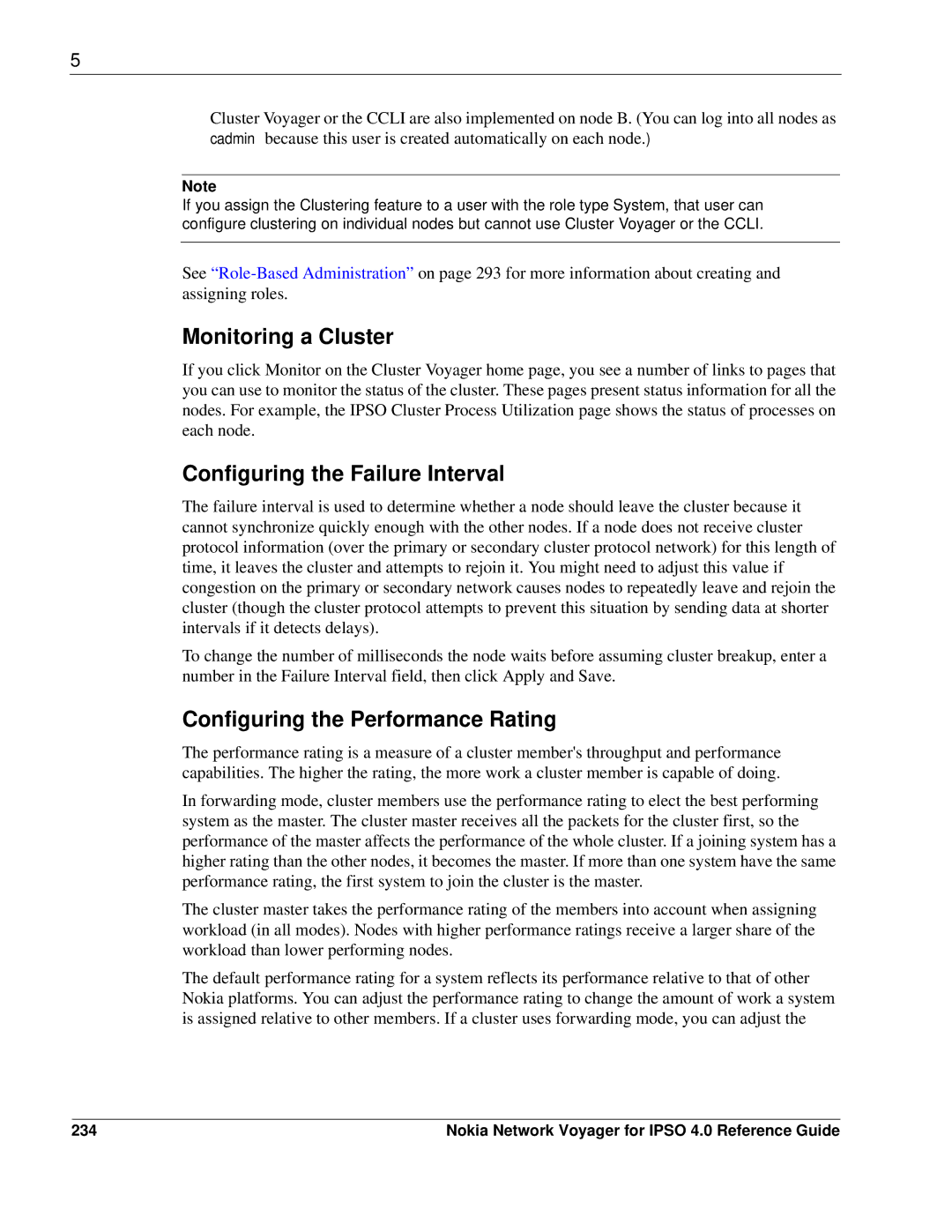
5
Cluster Voyager or the CCLI are also implemented on node B. (You can log into all nodes as cadmin because this user is created automatically on each node.)
Note
If you assign the Clustering feature to a user with the role type System, that user can configure clustering on individual nodes but cannot use Cluster Voyager or the CCLI.
See
Monitoring a Cluster
If you click Monitor on the Cluster Voyager home page, you see a number of links to pages that you can use to monitor the status of the cluster. These pages present status information for all the nodes. For example, the IPSO Cluster Process Utilization page shows the status of processes on each node.
Configuring the Failure Interval
The failure interval is used to determine whether a node should leave the cluster because it cannot synchronize quickly enough with the other nodes. If a node does not receive cluster protocol information (over the primary or secondary cluster protocol network) for this length of time, it leaves the cluster and attempts to rejoin it. You might need to adjust this value if congestion on the primary or secondary network causes nodes to repeatedly leave and rejoin the cluster (though the cluster protocol attempts to prevent this situation by sending data at shorter intervals if it detects delays).
To change the number of milliseconds the node waits before assuming cluster breakup, enter a number in the Failure Interval field, then click Apply and Save.
Configuring the Performance Rating
The performance rating is a measure of a cluster member's throughput and performance capabilities. The higher the rating, the more work a cluster member is capable of doing.
In forwarding mode, cluster members use the performance rating to elect the best performing system as the master. The cluster master receives all the packets for the cluster first, so the performance of the master affects the performance of the whole cluster. If a joining system has a higher rating than the other nodes, it becomes the master. If more than one system have the same performance rating, the first system to join the cluster is the master.
The cluster master takes the performance rating of the members into account when assigning workload (in all modes). Nodes with higher performance ratings receive a larger share of the workload than lower performing nodes.
The default performance rating for a system reflects its performance relative to that of other Nokia platforms. You can adjust the performance rating to change the amount of work a system is assigned relative to other members. If a cluster uses forwarding mode, you can adjust the
234 | Nokia Network Voyager for IPSO 4.0 Reference Guide |
